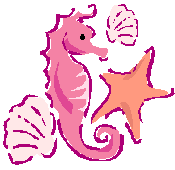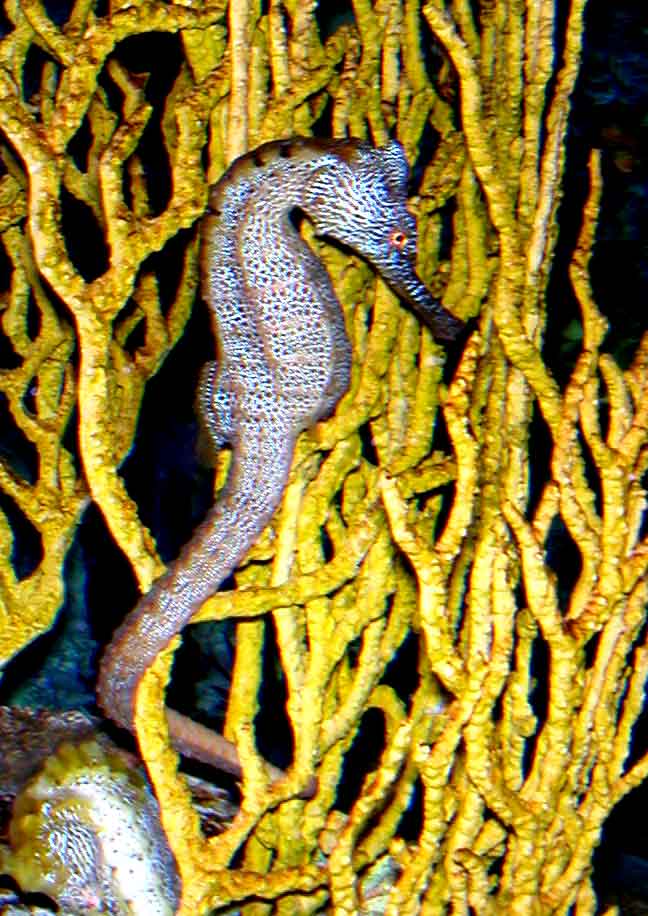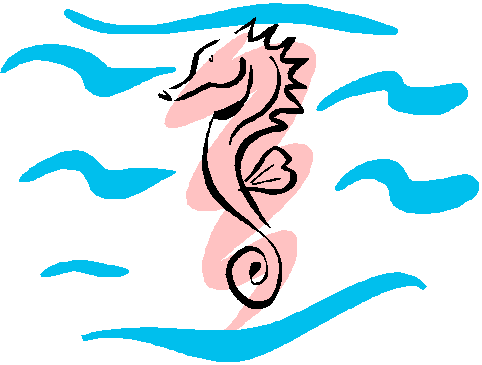 "A horse in the water"
"A horse in the water"

 Domain:
Eukarya
Domain:
Eukarya Kingdom: Animali (Animal)
Phylum: Chordata (Chordate)
Class: Osteichthyes (Bony Fish)
Order: Gasterosteifor (Pipefish and Sticklebacks)
Family: Syngnathidae (Pipefish and Seahorse)
Genus: Hippocampus (Seahorse)
Species: Hippocampus ingens (Pacific Seahorse)
Taken by Carlos Restrepo
The Pacific Seahorse is the largest of all the seahorses. It can be up to 12
inches (30cm) long. The seahorse is part of the bony fish class; the unique
feature is that the head is in the shape of a horse’s head. The Pacific Seahorse
comes in a variety of colors, depending on its surroundings and the water
temperature. They are also able to change their colors to match their
surroundings. They have a long circular snout to catch prey and a long curly
tail, which allows it to grab a hold of coral and sea grass. It uses gills for
breathing and also has a swim bladder that lets the seahorse control its
buoyancy. Pacific seahorses have three fins, two pectoral fins and one dorsal
fin. The pectoral fins are used for balance that flap back and forth as fast as
35 times per second, for stabilization and to move up and down. The dorsal fin allows the seahorse to move back
and forth. Seahorses can not swim very fast to get away from predators or catch
prey so they hide in the coral an d seagrass until their
meal comes along or until their predator
leaves.
d seagrass until their
meal comes along or until their predator
leaves.
The Pacific Seahorse is a complex multicellular
organism which puts it in the domain Eukarya. They
are heterotrophic and lack cell walls which is why it is classified in the
Animali kingdom. It is
classified in the Chordata phylum because it has a postnatal tail,
notochord and dorsal nerve cord. This organism has a bony vertebrae and lives in
the water which makes it classify in the Osteichthyes
class. They are separated in the order Gasterosteifor
because the males are the ones that nurse the eggs in a brood pouch.
They are classified in the family Syngnathidae because of the same head
morphology (adult seahorse and larval pipefish) and because they both have a
long tubular toothless mouth. The seahorses and pipefish are separated by
their body shape (pipefish are completely long and thin; where as the seahorse
has a head shaped as a horse and swims in an up right position) which puts the
seahorses in the genus Hippocampus. The Pacific Seahorses are the largest
and found in the Pacific Ocean, species Hippocampus ingens.